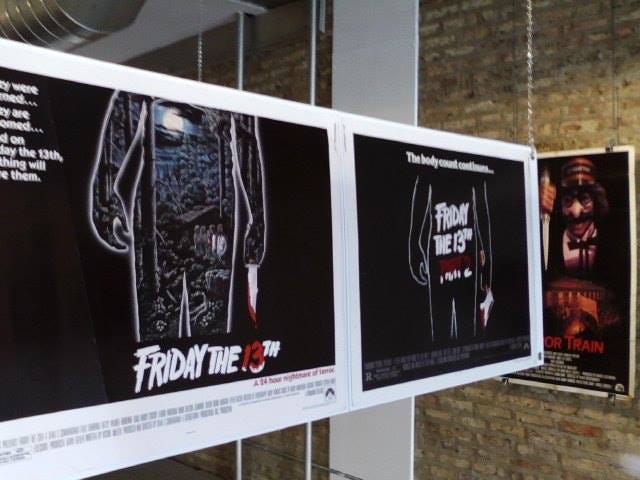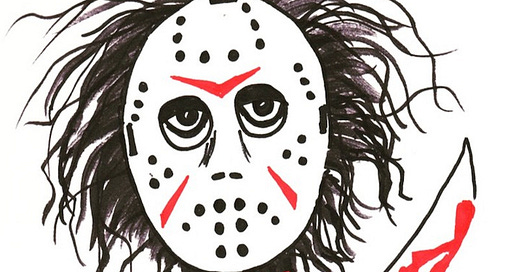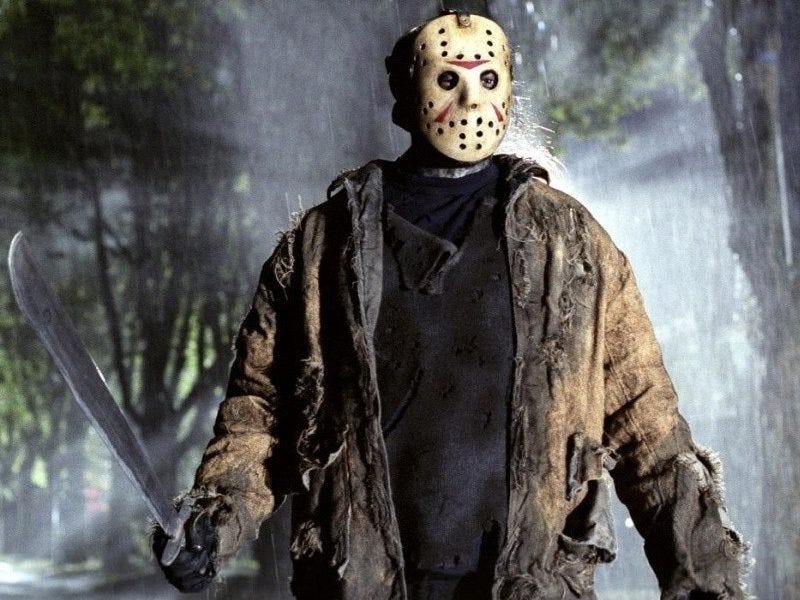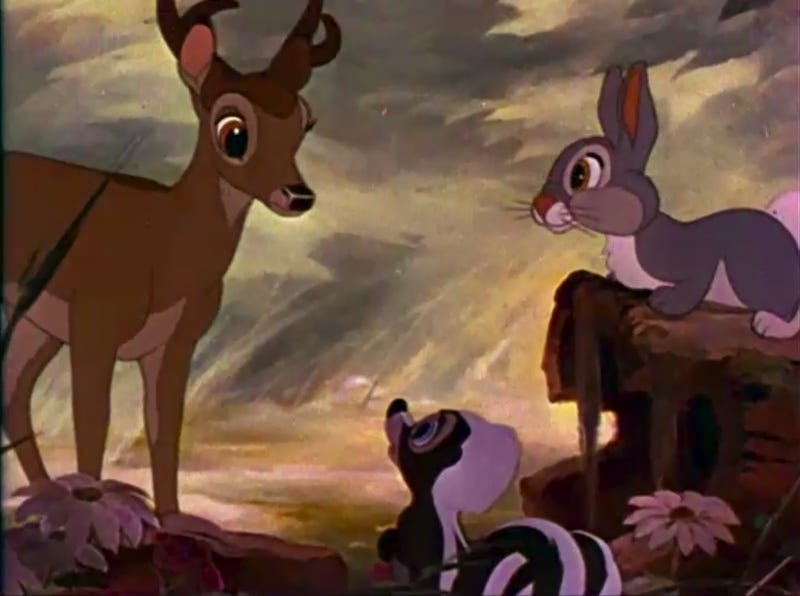I was a frightened child. I would be accosted by a clip or a trailer from a horror movie while watching TV and then freaked out for weeks. You’ve already read my reaction to seeing Bambi in the theater. That experience did nothing to encourage my movie watching, much less scary-movie watching. I distinctly remember glimpses of It’s Alive (1974), The Legacy (1978), The Fog (1980), The Children (1980), and Friday the 13th (1980) tormenting my young mind.
A decade or so ago, my sister and I were digging through DVDs at a pawn shop and came across six Children of the Corn movies. It was the franchise in its entirety at the time. Those movies are probably not the best place to start as several of them are just a retelling of the original Stephen King short story, but they set me on a path of watching slasher franchises. Soon to follow were A Nightmare on Elm Street, Hellraiser, Halloween, and others, but it was Friday the 13th that I found most compelling, perhaps because the trailer had so terrified me as a child, but maybe there’s more to it than that unshakeable memory.
There are different schools of thought about when the slasher subgenre emerged. Some cite proto-slashers like Alfred Hitchcock’s Psycho (1960) and Michael Powell’s Peeping Tom (1960). Some say the first true slasher was Bob Clark’s Black Christmas (1974), and others say it was Tobe Hooper’s The Texas Chain Saw Massacre (1974), but most people agree that the movie that really launched the subgenre proper was John Carpenter’s Halloween (1978). After Michael Myers terrorized the babysitters and children of Haddonfield, Illinois, a flood of holiday-themed slashers emerged: Prom Night (1980), New Year’s Evil (1980), My Bloody Valentine (1981), Graduation Day (1981), Happy Birthday to Me (1981), and Silent Night, Deadly Night (1984), among many others all celebrated their respective holidays with bodies, blood, and some slice-happy killer. Non-holiday slashers followed Halloween as well. They included Fred Walton’s When a Stranger Calls (1979), Abel Ferrara’s The Driller Killer (1979), Bill Lustig’s Maniac (1980), and the future-star-studded The Burning (1981; the movie debut of Holly Hunter, Jason Alexander, and Fisher Stevens).
Even among such a saturated line-up, Sean S. Cunningham’s Friday the 13th was 1980’s most commercially successful slasher, grossing nearly $60 million worldwide. It was also the first independent horror film to secure distribution by a major studio in the United States.

There are better original slashers (Halloween) and better franchises (Scream), but something about watching the first few Fridays find their feet is way more intriguing. In the pantheon of slasher killers, Halloween is built around Michael Myers, Wes Craven’s A Nightmare on Elm Street is nothing without Freddy Krueger, and in The Texas Chain Saw Massacre the chainsaw is brandished by no one but Leatherface. But on the Mount Rushmore of these murderers, there was one late arrival.
In Friday the 13th, Jason Voorhees only has a cameo in the first movie, he doesn’t become the machete-wielding killer until the second movie, and he doesn’t don his signature hockey mask until the third. What we talk about when we talk about Friday the 13th took at least three movies to fully form. The 2009 reboot combines elements of the first four movies into a foggy, nihilistic film with an extremely territorial killer, unlike the original lumbering menace in the woods around Camp Crystal Lake. The remake lacks any sense of levity, which I think is a major misstep. Horror and humor are adjacent universes with a very tenuous separation. That separation is even smaller between slashers and slapstick.
Another difference between Friday the 13th and most other slasher franchises: The first movie isn’t the best one. Most fans agree that even if a franchise comes back with a decent second and maybe third movie, the original is still superior (Silent Night, Deadly Night doesn’t get really good until deep into the franchise, but that’s for another discussion). Halloween, A Nightmare on Elm Street, and The Texas Chain Saw Massacre all have decent follow-ups, but none can touch the first of the bunch. Not so with Friday the 13th. The second movie is the best, and again, Jason had just become the killer, and he hadn’t even found his iconic hockey mask yet (There is an argument for The Final Chapter and Jason Lives being better and scarier, but that’s also for another discussion).
Aside from the successful and superb Scream and Terrifier franchises, most would say that the slasher era is far in the past. Yet send-ups like The Cabin in the Woods (2011) and The Final Girls (2015) and arty updates like Midsommar (2019) and In a Violent Nature (2024) show that where there are weapon-wielding maniacs hiding in the shadows and brutally innovative ends awaiting adventurous young people, we’re still watching.
What’s Your Favorite Scary Movie?
In the stray fourth installment of the Scream franchise, cinema club president Charlie Walker (played by Rory Culkin) describes the Stab movie in the making, as well as the aims of the killers in Scream 4 itself, saying they’re making “less of a shrequel
Thanks to Tim Baker for his feedback and input on this, and thanks to you for reading.
Happy Friday the 13th!
-royc.
http://roychristopher.com






